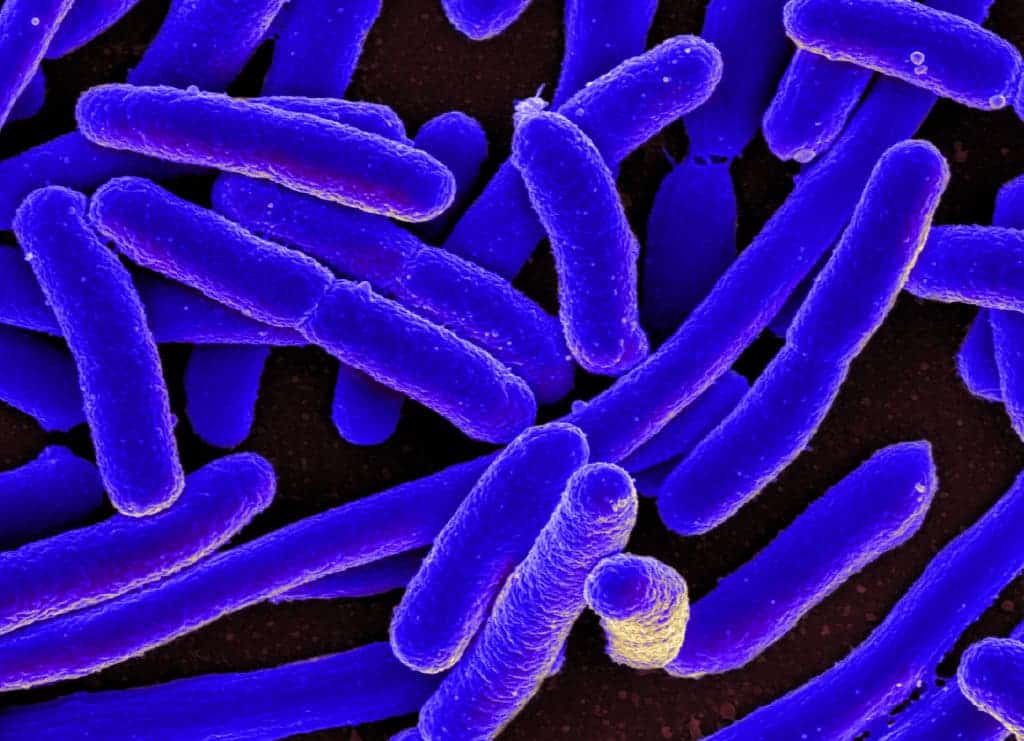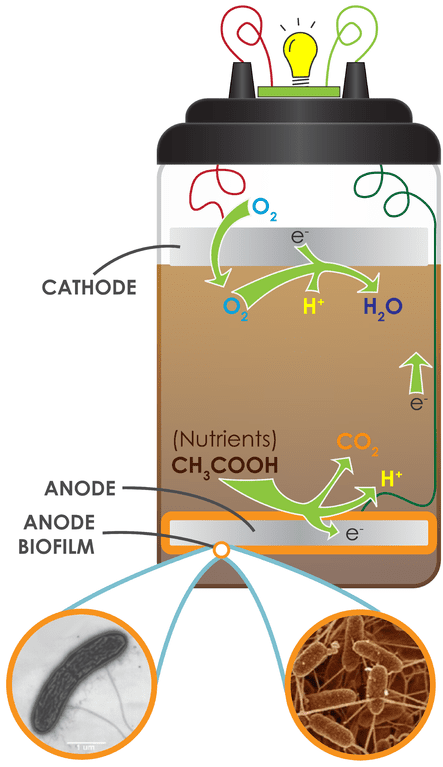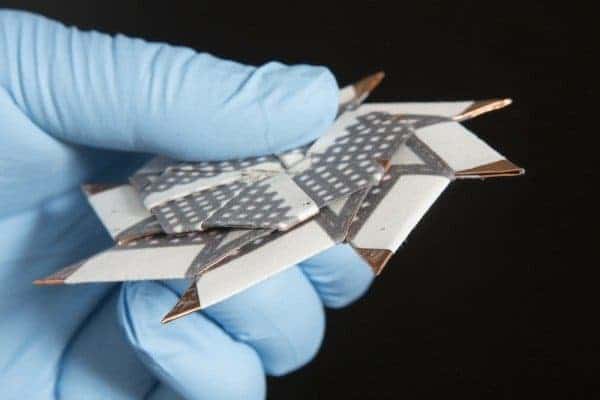Move aside, solar, wind, and water, there’s a new guy in town. Okay, not quite yet, but work is being made to create a bacterial fuel cell that can sustain itself for a long time. It’s actually not a new idea, M.C. Potter invented it in 1911 and was able to generate power from E. coli. The idea behind it is that microbes convert chemical energy into electrical energy. A big plus is that they emit little to no CO2. Currently, it’s only being used on a small-scale because the cells created haven’t been so efficient.
Researchers at Binghamton University are trying to extend the life of bacterial fuel cells by adding two types of bacteria that enter into a self-sustaining cycle. This new power cell generated power for 13 days in a row. It will require a lot more work to bring it to a commercial level, but for now it is the first time that bacterial synergy has generated power.

Teamwork
Assistant Professor Seokheun Choi and Ph.D. candidate Lin Liu chose two types of bacteria that could form a self-sustaining relationship. Phototrophic bacteria needs sunlight, carbon dioxide, and water to make energy, like plants. Heterotrophic bacteria need to eat organic matter or other bacteria to survive. The researchers mixed both bacteria together in a small cell chamber, think one-fifth the size of a teaspoon (that is 90 microliters).
The cell was placed in sunlight and some food was added to feed the heterotrophic bacteria and cause them to grow. The heterotrophic bacteria produced the CO2 that the phototrophic bacteria need to create their own food, and the phototrophic bacteria are eaten by the heterotrophic bacteria. No more food was added. This cycle kept going nonetheless and created power for 13 days. Both bacteria help to sustain the other.

Bacteria-powered
The metabolism of the bacteria generated an electrical current of 8 microamps per square centimeter of cell constantly. For comparison, an average 42” high-def TV needs about half an amp of electrical current to work. It would require 62,500 of these bacterial cells to run.
This is just the first step in developing bacteria-produced power. The small size of the cells allowed them to start up quickly without much electrical resistance. In practice, these cells wouldn’t be used to power your toaster, but to provide power in remote or dangerous locations. Devices that don’t require much power, like health monitors and infrastructure diagnostic sensors would mostly be powered this way.
“There are some challenges of using this technique. Balancing both microorganisms’ growth to maximize the device performance and the need to make sure that this closed system will permanently generate power without additional maintenance are two we have found. Long-term experiments are needed.”—Assistant Professor Seokheun Choi

If Professor Seokheun Choi’s name sounds familiar it’s because he has developed other cool bacteria-based batteries. Last year, he created solar panels with phototrophic bacteria inside that generated energy. He also developed a paper battery that is folded like origami and uses microbes found in dirty water or saliva to power it. All of these are interesting inventions!
Journal reference: Lin Liu, Seokheun Choi. Self-sustaining, solar-driven bioelectricity generation in micro-sized microbial fuel cell using co-culture of heterotrophic and photosynthetic bacteria. Journal of Power Sources, 2017; 348: 138 DOI: 10.1016/j.jpowsour.2017.03.014






